There was a lot of buzz over the last couple of years since early 2019 about Tesla’s major upgrade to its Autopilot driver assistance technology, which itself was first introduced back in 2014-2015. Since their release, they have been held up as remarkable examples of humanity’s continuing progress towards making a fully self-driving car.
But it all comes at a pretty steep premium, a topic that we’ll be covering in today’s blog. Below you’ll find our full guide to the features, benefits, and cost of getting either Tesla’s latest Autopilot or the so-called “Full Self-Driving” mode upgrade.
What is Autopilot?
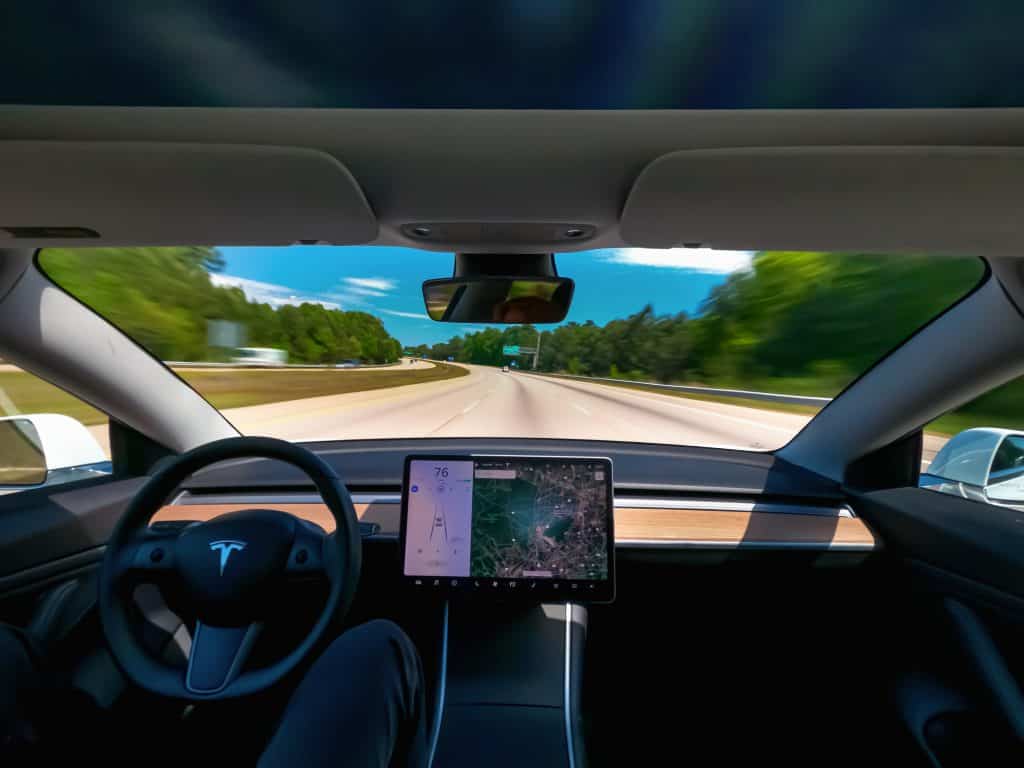
Autopilot is Tesla’s first advanced driver assistance system (ADAS) suite that were the first steps towards making Tesla more of a self-driving car. Autopilot currently and mainly comprises 2 key features:
- Traffic-Aware Cruise Control
- Autosteer
The Traffic-Aware Cruise Control feature is like a smart adaptive cruise control, matching your speed to the car ahead of you and also in the surrounding traffic:
Autosteer is essentially a lane-keeping assistance feature that uses the cruise control to monitor the vehicles around it. Other features used within this package include emergency braking, blind-spot monitoring and lane-keeping assistance.
Enhanced Autopilot
An addition to the regular Autopilot was “Enhanced Autopilot” first introduced in 2016, which brought extra features, namely automatic lane changing, auto parking and summoning your parked Tesla from tight parking spots using your smartphone or Tesla key (though the last two have since become part of the Full Self-Driving Mode package — see below).
Both Autopilot and Enhanced Autopilot are classed as a SAE level 2 autonomous driving feature, which means it’s not fully self-driving, nor can the driver engage it without also remaining in the driver’s seat in an alert and ready position to take over driving if and when the time arises.
Do All Teslas Have Autopilot?
No, not all Teslas have autpilot. Autopilot was only introduced on Tesla models manufactured and released after September 2014, which is when Autopilot was first introduced and rolled out.
Any car from that period does have it, so while it means many Tesla models — their sales have been increasing year on year since 2014 — do have Autopilot, the ones who still have their Tesla that they early adopted back between 2008 and early to mid-2014 don’t have access to the Autopilot feature.
Package Changes
As we mentioned, Autopilot was first introduced in 2014, and was the only option from 2014 to 2016. From 2016, Tesla introduced Enhanced Autopilot, which ran until 2019, and was briefly brought back in 2020 but now in North America at least is absent once more.
Where there were three packages that existed among Tesla owners (Autopilot, Enhanced Autopilot, and FSD), there are now only 2, namely Autopilot or FSD. Autopilot only contains the two main features mentioned above. FSD opens up all the other features.
Previously, Enhanced Autopilot had been a middle ground, offering more than Autopilot but not as many features as FSD.
What is Full Self-Driving Mode?
Full Self-Driving (FSD) Mode is a more recently introduced package that includes many more smart features and is now sold as a larger subscription package for Tesla drivers:
The current FSD package includes a number of features listed on Tesla’s website. They include:
- Navigate on Autopilot
- Auto Lane Change
- Autopark
- Summon
- Smart Sumon
- Traffic and Stop Sign Control
Some of these features were part of the Enhanced Autopilot suite (e.g. Auto Lane Change) but are now sold within the FSD package deal. Two of these features (Navigate and Traffic and Stop Sign Control) are in the Beta stage.
The purpose of this suite is to greatly enhance the Tesla’s autonomous capabilities on the road. On roads and highways recognized by the system, the driver needs to just sit in their place and watch as the car seems to take itself between traffic, between lanes and around all corners and junctions to reach your destination.
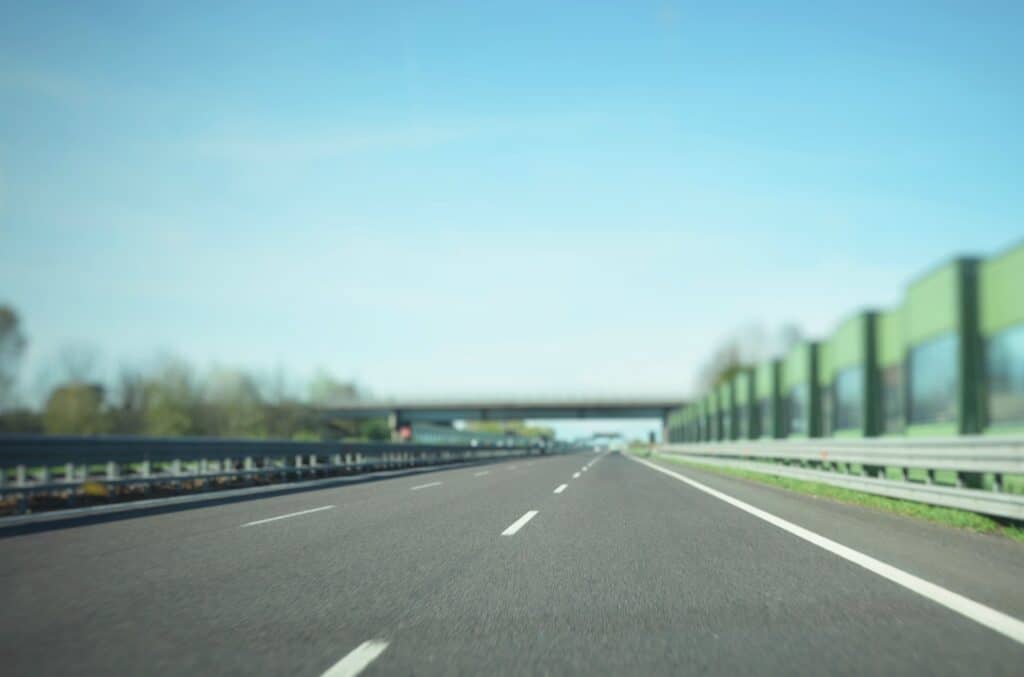
There are also a number of features to help with parking within the suite, namely Autopark, Summon and Smart Summon. The latter 2 appear to be related, and they are. Summon is a feature where you can get the car to move itself out of a tight parking space using your mobile app or your Tesla key.
It could be that you’re blocked in and can’t access the doors, for example. Smart Summon allows the car to navigate itself through more complex parking structures to come and find you at your location in the parking lot.
As for Autopark, the name is quite astute in that it’s a one-touch parallel or perpendicular parking assistance feature. It’s easy to see the appeal of the package, since it now offers a great array of features.
How Much Are Autopilot and Full Self-Driving Mode?
Standard Autopilot came as a standard feature at no extra charge on the Model 3, Model S and Model X cars. It’s also on Model Y cars now and you can expect to see it as a standard feature on all new Teslas. Enhanced Autopilot did cost around $4000 before the pricing model was changed in the summer of 2021.
Enhanced Autopilot was actually dropped for some time but reintroduced as a cheaper alternative to the expensive FSD package in 2020, which at a one-time fee of $10,000 was out of the range even of some Tesla owners.
Full self-driving mode first arrived as an expensive add-on to your Tesla, costing a quite considerable $10,000 upgrade on top of your other buying costs. New Tesla buyers could opt in or out at the point of purchase, and existing car owners could get the system as an over-the-air upgrade after purchasing.
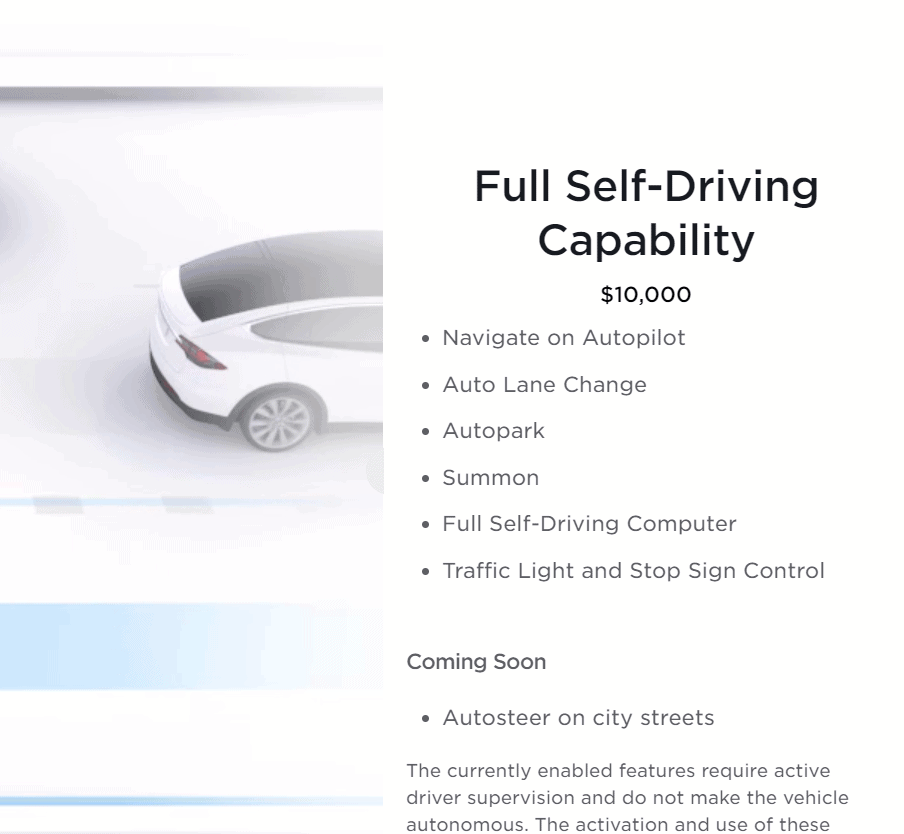
July 2021: Pricing Model Changes
Who knows if it was because Elon Musk got inspired by the success of monthly streaming subscriptions, but Tesla radically changed their policy in the summer of 2021. From July 2021, the FSD package was changed to a monthly subscription model that users could cancel at any time. There are two price points:
- $199 a month
- $99 a month.
The $199 price is for those who are upgrading from basic Autopilot to FSD capabilities. Those who are moving from Enhanced Autopilot to FSD capability only have to pay $99 a month. For those who purchased the package at $10,000, the good news is that they don’t have to pay the subscription.
At the time of writing, Enhanced Autopilot has once again been removed as an option on new Teslas
Can Teslas be Upgraded to Receive Full Self Driving Mode?
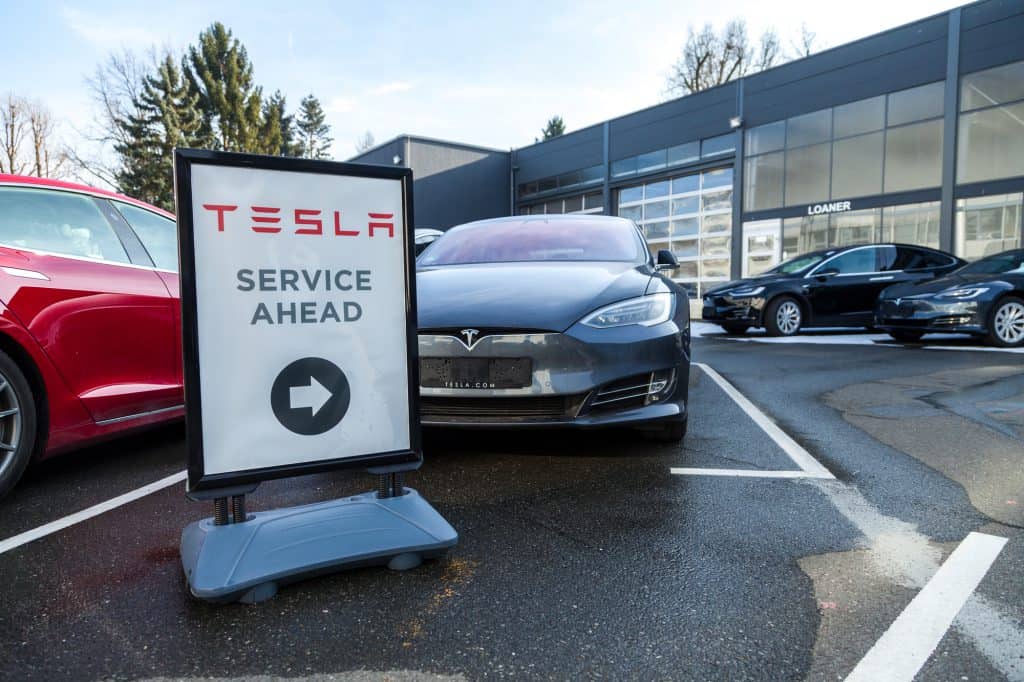
Yes, vehicles that have the Full Self-Driving computer 3.0 or above plus either a Basic or Enhanced Autopilot package are eligible to upgrade to FSD capability. The FSD software does not bring with it any upgrades to a Tesla owner’s hardware.
In other words, the computer has to be in that configuration at least for the FSD software to be successfully installed and to work properly.
If a Tesla is lacking the proper FSD computer, the owner can take the car to a Tesla Service Center to have it installed for $1,000, after which they can subscribe as other owners do.
Subscription can be done either with the Tesla smartphone app, or via one’s Tesla account online. These 2 channels can also be used to cancel the subscription at any point, so drivers who are either unsatisfied with it, or who feel that in reality it’s superfluous to their requirements can simply opt out.
Does Full Self-Driving Mode Allow a Tesla to “Drive Itself”?
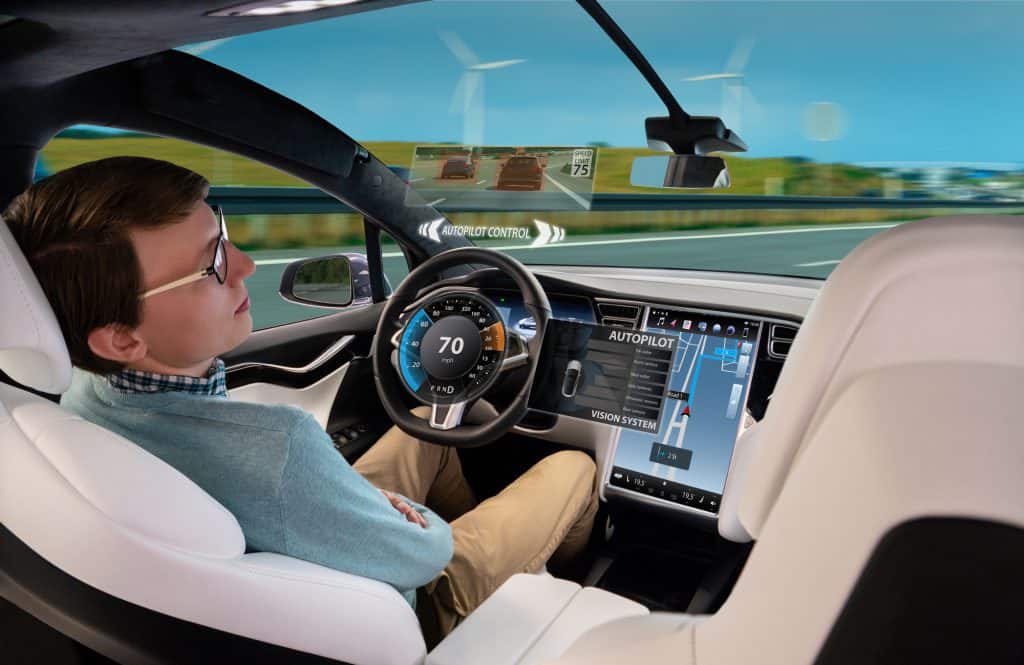
No, full self-driving does not allow for the Tesla to drive itself. While Tesla continues to rightly receive praise for so much of what they are doing for the promotion of EVs around the world, the issue of autonomous driving has proven to be something of a thorn in their side.
Overpromising
At the heart of the matter, as has often happened with Tesla releases, are a number of unfulfilled promises made by Elon Musk regarding the capabilities of Tesla’s Autopilot and FSD systems. The company shot themselves in the foot a bit even just in their choice of names. Clearly the names suggest full self-driving capability, but the reality is quite different.
The SAE, which provides official categorization of autonomous driving levels 0-5, currently places Tesla models at level 2. Admittedly, Tesla has probably the most comprehensive level 2 software being mass produced, and has left many competitors in their wake as they continue to progress. The trouble, however, is Musk overpromising that the company will reach level 5 in the next few years.
To date, only the Honda Legend sedan has reached level 3, and even those were made to a very limited production of lease-only vehicles. So, Tesla is still far ahead for mass-produced AI-assisted driving, but they are underdelivering on promises.
The unfortunate conflict here is that Tesla is actually delivering well on its level 2 side, but it’s trying to sell something as level 5, so their real achievement is overlooked because of their huge disappointing miss of a promise.
Accidents
The other unfortunate side to this story is that media attention on Tesla crashes and other accidents related to the misuse of Autopilot are raising serious legal and safety questions, which ultimately could see progress toward autonomous vehicles slow down. The overall corporate strategy for implementing autonomous driving at Tesla has been ranked dead last by Guidehouse Insights, a prominent management consultancy based in New York.
Conclusion: Is Autopilot or FSD Worth It?
Some people may have thought that sticking with Enhanced Autopilot was enough, but for North American customers at least it seems that upgrading to FSD is worth it, be it as the subscription or buying a new Tesla and paying for the package up front for $10,000.
The subscription model is good for existing Tesla customers who may think that paying out thousands as a lump sum to upgrade is unreasonable when they’ve already paid so much to buy and run their Tesla for so long. It spreads out the cost while still offering all the latest features, and it’s even better value for those who upgrade from the Enhanced Autopilot package.
Whatever their mistakes with making promises, Tesla have done a good job in creating the most advanced and comprehensive set of commercially viable advanced driver assistance software, and are certainly the closest to a production model that can drive itself. We advise people to try and focus on the good things and real achievements of Tesla’s technology and not get too mired in the controversies of Musk and his team.